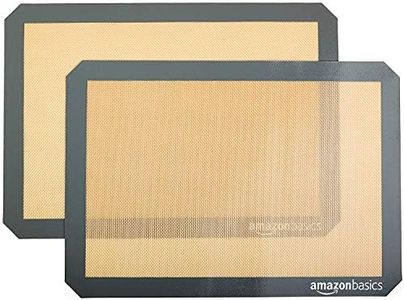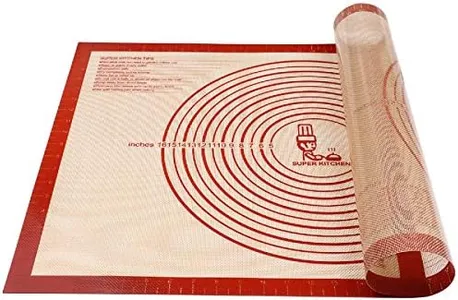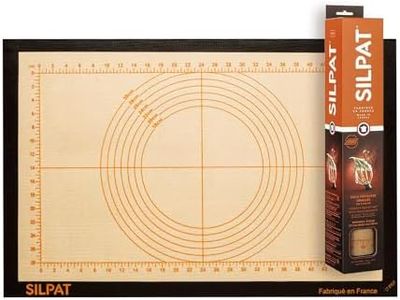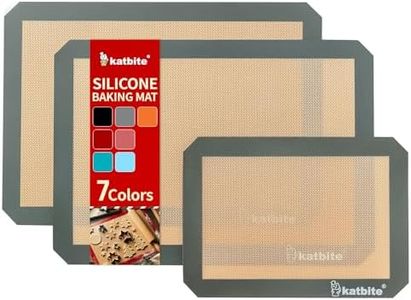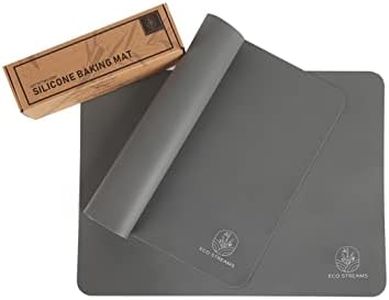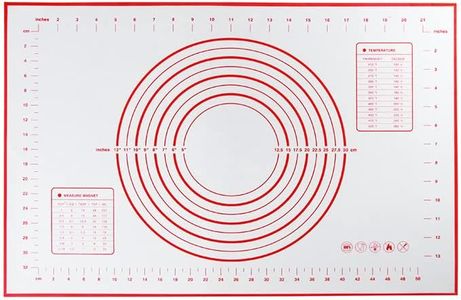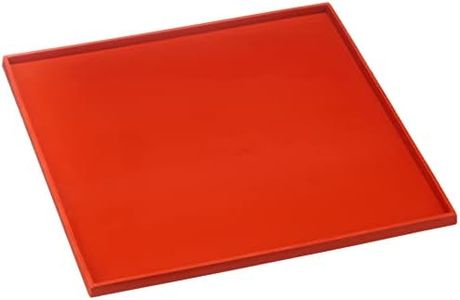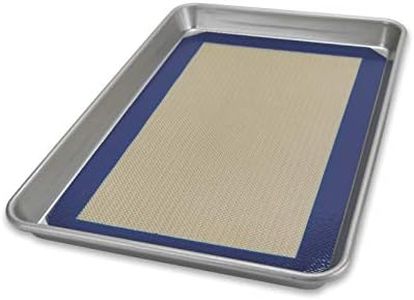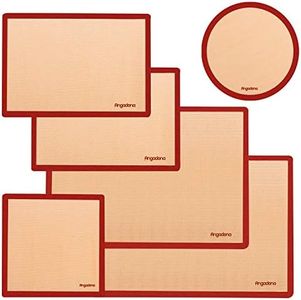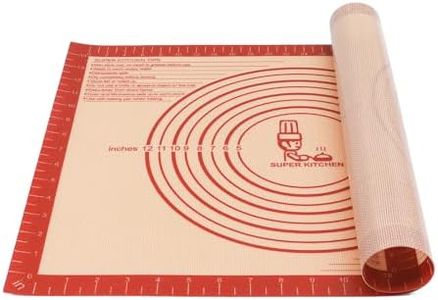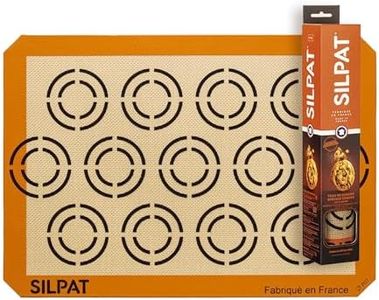We Use CookiesWe use cookies to enhance the security, performance,
functionality and for analytical and promotional activities. By continuing to browse this site you
are agreeing to our privacy policy
10 Best Silicone Baking Mats
From leading brands and best sellers available on the web.Buying Guide for the Best Silicone Baking Mats
Choosing the right silicone baking mat can make baking easier, help reduce waste from parchment paper, and improve your overall cooking experience. The key is to understand which features are most important for your style of baking and what will make cleanup and storage a breeze. Focusing on the right specs can save you from buying a mat that doesn’t suit your kitchen habits or needs.Material QualitySilicone baking mats are typically made from food-grade silicone, sometimes mixed with fiberglass for reinforcement. This is important because good quality material ensures durability, even heat distribution, and won’t release toxins at high baking temperatures. You’ll often see mats described as 100% food-grade or reinforced—pure silicone mats are flexible and easy to store, while those with fiberglass layers tend to be more rigid and sturdy. If you do heavy baking or want a longer-lasting product, look for mats with reinforced layers. For more occasional or lighter baking, a pure silicone mat offers enough convenience.
Heat ResistanceHeat resistance refers to the maximum temperature the mat can safely withstand without warping or releasing harmful substances. This is typically measured in degrees Fahrenheit or Celsius. Basic silicone mats can handle around 400°F (200°C), while high-quality mats may go up to 480°F (250°C) or higher. If you bake treats that need higher temps (like pizza or artisan bread), choose a higher heat tolerance. For cookies or general pastries, most standard mats suffice.
Size and ShapeSilicone mats come in various sizes and sometimes different shapes, like circles for pizza or pies and rectangles for cookie sheets. Size matters because the mat should fit your baking sheet without needing to be trimmed or folded. Common sizes include half-sheet, quarter-sheet, and full-sheet pan sizes. Consider measuring your most-used baking tray and picking a mat that fits it snugly to avoid bunching or spilling over.
ThicknessThe thickness of a silicone mat affects even heat distribution and durability. Thinner mats (around 0.5 mm) are lighter and cheaper but might not bake as evenly and can wear out faster. Thicker mats (up to 1 mm or more) feel sturdier and distribute heat more uniformly, but they’re a bit heavier and bulkier to store. If you frequently bake sensitive items like macarons, a thicker mat can give more consistent results. For casual use and lighter cleanup, thinner mats work well.
Nonstick PerformanceNonstick performance determines how easily food lifts off the mat after baking and how easy it is to clean. Most mats are advertised as nonstick, but performance can vary—better mats release baked goods without the need for added fats or sprays. If you often bake sticky items (like caramel), look for reviews or descriptions that confirm excellent nonstick performance. For items less prone to sticking, almost any mat will do.
Ease of CleaningEase of cleaning is vital for convenience; some mats clean with just a wipe or quick wash, while others might hold onto oils or odors. Dishwasher-safe mats are easiest to maintain, but hand-washable ones aren’t much more work. If you want minimal cleanup after baking, look for dishwasher safety and reviews mentioning stain resistance.
Storage FlexibilityStorage flexibility means how easily the mat can fit into your kitchen when not in use. Softer, thinner silicone mats can be rolled or folded to save space, while thicker or reinforced mats might need to lie flat. If you have limited storage, opt for mats that stay flexible and can be rolled up neatly.

